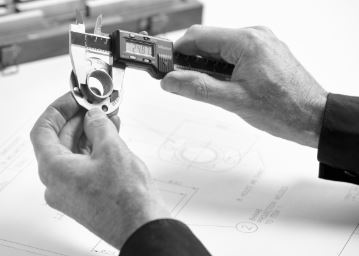
Solar tracking systems represent the pinnacle of photovoltaic technology, offering significant energy yield improvements over fixed-mount installations through their ability to follow the sun's movement throughout the day and across seasons. These sophisticated electromechanical systems require specialized fastening solutions that can withstand the unique stresses and environmental conditions associated with continuous movement, varying loads, and precise positioning requirements. Structural bonding fasteners for solar tracking systems have emerged as critical enabling technologies that provide the reliability, durability, and performance characteristics necessary for successful tracking system implementations.
The complexity of solar tracking systems far exceeds that of traditional fixed-mount installations, incorporating drive mechanisms, control systems, sensors, and structural elements that must work in harmony to deliver optimal energy production. These systems must maintain precise positioning accuracy while accommodating wind loads, thermal expansion, and mechanical wear throughout operational lifespans that typically exceed 25 years. The fastening systems that hold these components together represent critical links in the performance chain, requiring engineering excellence and material selection that matches the sophistication of the tracking systems themselves.
Understanding Solar Tracking System Technology
Solar tracking systems utilize advanced mechanical and control technologies to orient photovoltaic panels toward the sun throughout the day, maximizing energy capture by maintaining optimal angles relative to solar radiation. Single-axis trackers rotate panels around one axis, typically aligned north-south to track the sun's east-west movement, while dual-axis trackers provide movement in both azimuth and elevation to maintain perpendicular orientation to solar radiation throughout the day and across seasons.
The mechanical complexity of tracking systems creates unique challenges for fastening applications that are not present in fixed-mount installations. Moving joints, bearing assemblies, drive mechanisms, and control systems all require specialized fastening solutions that can accommodate motion while maintaining structural integrity. Additionally, the increased structural loads from wind-induced resonance, operational forces from drive systems, and dynamic loading from tracking movements demand fastening systems with superior mechanical properties.
Modern tracking systems incorporate sophisticated control algorithms that continuously optimize panel positioning based on solar ephemeris calculations, weather conditions, and system performance feedback. These control systems rely on precise mechanical positioning that depends on the integrity of structural connections throughout the tracking mechanism. Any degradation in fastening system performance can compromise tracking accuracy and reduce energy production efficiency.
The economic drivers for solar tracking systems are compelling, with single-axis trackers typically providing 15-25% energy yield improvements over fixed-mount systems, while dual-axis trackers can achieve 30-40% improvements in optimal conditions. However, these performance gains come with increased system complexity and higher initial costs, making fastening system reliability critical to achieving acceptable return on investment.
Unique Challenges in Tracking System Fastening
The dynamic nature of solar tracking systems creates fastening challenges that are fundamentally different from those encountered in static installations. Continuous movement introduces cyclic loading that can lead to fatigue failures in conventional fastening systems, while the need for precise positioning requires fasteners that maintain tight tolerances despite operational stresses and environmental exposure.
Bearing loads in tracking systems can be substantial, particularly in large installations where individual trackers may support hundreds of solar panels. The fastening systems that connect bearings to structural supports must accommodate both radial and axial loads while maintaining precise alignment that enables smooth operation. Misalignment due to fastening system degradation can lead to increased wear, reduced efficiency, and premature failure of expensive drive components.
Drive system mounting presents another unique challenge, as these components generate significant torque and thrust loads that must be transferred through fastening systems into the structural framework. The fasteners must provide secure attachment while accommodating the thermal expansion and vibration associated with motor operation. Additionally, the fastening system must maintain precise alignment to ensure proper gear engagement and smooth operation throughout the tracking system's operational life.
Environmental considerations become more complex in tracking systems due to the exposure of moving components to wind, rain, dust, and temperature variations. Fastening systems must maintain performance despite exposure to these conditions while accommodating the additional stresses from tracking movement. The increased surface area and complexity of tracking systems also provide more opportunities for contamination and corrosion, requiring fastening materials and coatings with enhanced environmental resistance.
BigHead Bonding Fasteners: Advanced Solutions for Dynamic Applications
Hall-Fast's comprehensive range of BigHead bonding fasteners, available at https://www.hall-fast.com/fasteners-small-components/bighead-bonding-fasteners, provides innovative solutions specifically designed to address the unique challenges of solar tracking system applications. These revolutionary fastening systems combine the advantages of structural bonding with the reliability and convenience of mechanical fasteners, creating hybrid solutions that excel in demanding dynamic applications.
The BigHead design philosophy addresses many of the fundamental challenges in tracking system fastening through its unique load distribution characteristics. The enlarged base of BigHead fasteners spreads loads over significantly larger areas compared to traditional point fasteners, reducing stress concentrations that can lead to fatigue failures in dynamic applications. This characteristic proves particularly valuable in tracking systems where cyclic loading from continuous movement creates challenging operating conditions.
BigHead male unthreaded nails, accessible at https://www.hall-fast.com/fasteners-small-components/bighead-bonding-fasteners/bighead-male-unthreaded-nails, provide specialized solutions for applications where smooth shank configurations are preferred. These fasteners can be bonded into structural components during manufacturing, providing secure attachment points that don't require threaded connections. The smooth shank design eliminates stress concentrations that can develop around thread roots, improving fatigue resistance in dynamic applications.
The BigHead male threaded studs, found at https://www.hall-fast.com/fasteners-small-components/bighead-bonding-fasteners/bighead-male-threaded-studs, offer versatile attachment solutions that can accommodate various hardware configurations while providing the superior load distribution characteristics of the BigHead platform. These fasteners prove particularly useful in tracking system applications where multiple components must be secured to common mounting points.
BigHead female threaded collars, available at https://www.hall-fast.com/fasteners-small-components/bighead-bonding-fasteners/bighead-female-threaded-collars, provide threaded attachment points that can be permanently bonded to structural components. These fasteners offer advantages in applications where access to the rear of mounting surfaces is limited, a common situation in tracking system installations where space constraints and component accessibility can complicate assembly operations.
Structural Analysis and Load Management
Solar tracking systems must be engineered to withstand various loading conditions that differ significantly from fixed-mount installations. Dead loads from panels and support structures represent the baseline loading condition, but operational loads from tracking movement, wind loads that vary with panel orientation, and dynamic loads from drive system operation create complex loading scenarios that challenge conventional fastening approaches.
Wind loading analysis for tracking systems requires sophisticated modeling that accounts for the varying panel orientations and the potential for wind-induced resonance in the tracking mechanism. Unlike fixed-mount systems where wind loads are relatively predictable, tracking systems must accommodate wind forces from multiple directions as panels rotate throughout the day. The fastening systems must provide adequate strength to resist these loads while maintaining the precise positioning required for optimal energy production.
Seismic loading considerations become more complex in tracking systems due to the dynamic response characteristics of the tracking mechanism. The fastening systems must accommodate both the ground motion from seismic events and the amplified motions that can develop in the tracking structure due to its dynamic response. This requirement often necessitates specialized fastening solutions that can accommodate large displacements without failure.
The BigHead fastener design excels in these challenging loading environments due to its superior load distribution characteristics and proven performance in dynamic applications. The enlarged base distributes loads over areas many times larger than traditional point fasteners, reducing stress concentrations and improving fatigue resistance. This characteristic proves particularly valuable in tracking systems where cyclic loading from continuous movement creates demanding operating conditions.
Drive System Integration and Mounting Solutions
The drive systems that provide tracking motion represent some of the most challenging fastening applications in solar tracking systems. These components must generate sufficient torque to move large arrays of solar panels while maintaining precise positioning accuracy throughout the system's operational life. The fastening systems that secure drive components to the structural framework must accommodate the significant forces generated during operation while maintaining precise alignment.
Motor mounting applications require fastening solutions that can withstand the vibration and thermal cycling associated with electric motor operation. The fasteners must provide secure attachment while accommodating thermal expansion of motor housings and mounting brackets. Additionally, the fastening system must maintain precise alignment to ensure proper coupling engagement and smooth power transmission throughout the drive train.
Gearbox mounting presents similar challenges, as these components generate substantial reaction forces that must be transferred through fastening systems into the structural framework. The fasteners must provide secure attachment while accommodating the thermal expansion and operational vibration associated with gear reduction systems. Misalignment due to fastening system degradation can lead to increased wear, noise, and premature failure of expensive gearbox components.
Linear actuator mounting, common in dual-axis tracking systems, requires fastening solutions that can accommodate the large forces generated during positioning operations. These actuators must overcome wind loads, friction forces, and gravitational loads while maintaining precise positioning accuracy. The fastening systems must provide secure attachment while accommodating the thermal expansion and operational stresses associated with hydraulic or electric actuator operation.
Bearing Assembly and Rotation Mechanism Fastening
The bearing assemblies that enable tracking movement represent critical components that require specialized fastening approaches to ensure reliable long-term operation. These assemblies must support both radial loads from panel weight and wind forces, as well as axial loads from tracking drive systems. The fastening systems must maintain precise bearing alignment while accommodating thermal expansion and operational loads throughout the system's service life.
Slewing ring bearings, commonly used in tracking systems, present unique fastening challenges due to their large diameter and the need for precise bolt circle alignment. The fastening systems must provide uniform load distribution around the bearing circumference while maintaining the tight tolerances required for smooth operation. Bolt preload must be carefully controlled to prevent bearing distortion while ensuring adequate clamping force to resist operational loads.
Pivot bearing mounting requires fastening solutions that can accommodate the high contact stresses developed at bearing interfaces while maintaining precise alignment. The fasteners must provide secure attachment while accommodating thermal expansion and operational deflections that can develop under load. Additionally, the fastening system must maintain performance despite exposure to environmental conditions that can accelerate corrosion and wear.
The BigHead bonding fastener approach offers significant advantages in bearing mounting applications by providing superior load distribution that reduces stress concentrations around fastener locations. This characteristic proves particularly valuable in thin-wall structural components where conventional fasteners might create unacceptable stress concentrations that could lead to premature failure.
Environmental Durability and Corrosion Resistance
Solar tracking systems face more severe environmental challenges than fixed-mount installations due to their increased complexity, moving components, and exposure to various environmental conditions throughout their operational cycles. The fastening systems must maintain performance despite exposure to temperature extremes, moisture, dust, salt spray, and various atmospheric contaminants that can accelerate corrosion and degradation processes.
Atmospheric corrosion represents a significant challenge for tracking system fasteners due to the extended exposure periods and the difficulty of performing maintenance on moving components. The fastening materials must demonstrate exceptional corrosion resistance while maintaining mechanical properties throughout the system's 25-year operational life. Stainless steel grades such as 316 and 304 are commonly employed, but specific environmental conditions may require alternative materials or specialized coatings.
Galvanic corrosion between dissimilar metals can become a significant issue in tracking systems where various metals are used in structural components, drive systems, and fastening hardware. The fastening system design must consider galvanic compatibility and may require isolation techniques or specialized coatings to prevent accelerated corrosion at component interfaces. Proper material selection and system design can prevent galvanic corrosion issues while maintaining mechanical integrity.
Fretting corrosion can develop at fastener interfaces subject to small-amplitude oscillatory motion, a condition that can occur in tracking systems due to operational vibration and thermal cycling. This type of corrosion can lead to fastener loosening and eventual failure if not properly addressed through material selection and fastening system design. Specialized coatings and surface treatments may be necessary to prevent fretting corrosion in critical applications.
Advanced Control System Integration
Modern solar tracking systems incorporate sophisticated control systems that rely on precise mechanical positioning to achieve optimal energy production. These control systems depend on the integrity of structural connections throughout the tracking mechanism, making fastening system reliability critical to overall system performance. Any degradation in fastening system performance can compromise tracking accuracy and reduce energy production efficiency.
Sensor mounting applications require fastening solutions that maintain precise positioning while accommodating the thermal expansion and operational vibration associated with tracking system operation. Position sensors, inclinometers, and solar sensors must maintain accurate calibration throughout the system's operational life, requiring fastening systems that provide stable, repeatable positioning despite environmental stresses.
Control system enclosure mounting presents challenges related to environmental protection and accessibility for maintenance operations. The fastening systems must provide secure attachment while maintaining environmental sealing and allowing for field service when necessary. Additionally, the fastening system must accommodate thermal expansion and operational vibration without compromising enclosure integrity.
Communication system mounting, including wireless antennas and data collection equipment, requires fastening solutions that can maintain performance despite the dynamic environment of tracking systems. These components must maintain proper orientation and connectivity while accommodating the movement and vibration associated with tracking operations.
Quality Assurance and Testing Protocols
The critical nature of solar tracking systems demands comprehensive quality assurance programs that address both mechanical performance and long-term environmental durability of fastening systems. Testing protocols must simulate the various stresses and environmental conditions that fastening systems will experience throughout their operational life in dynamic tracking applications.
Fatigue testing becomes particularly important for tracking system fasteners due to the cyclic loading from continuous movement. These tests must simulate the loading conditions and cycle counts expected during the system's operational life, typically involving millions of cycles over 25 years of operation. The testing must account for various loading amplitudes and frequencies that can develop under different operating conditions.
Environmental testing exposes bonded assemblies to accelerated aging conditions including temperature cycling, humidity exposure, UV radiation, salt spray, and atmospheric corrosion. These tests help identify potential degradation mechanisms and validate expected service life under various environmental conditions. The testing protocols should reflect the specific environmental conditions expected in the intended application location.
Vibration testing evaluates the fastening system's ability to maintain integrity under the dynamic loading conditions typical of tracking systems. These tests must simulate the vibration spectra generated by drive systems, wind loading, and structural resonances that can develop in tracking installations. The testing should verify that fastening systems maintain performance without loosening or degradation under these dynamic conditions.
Hall-Fast's Comprehensive Solution Portfolio
Hall-Fast has established itself as a leading supplier of specialized fastening solutions for the solar industry through nearly two decades of continuous innovation and customer service excellence since the company's founding in August 2006. The company's extensive inventory of approximately 200,000 standard items from leading brands provides customers with unparalleled choice and the convenience of single-source procurement for complex tracking system applications.
The company's expertise in structural bonding fasteners for solar tracking systems stems from deep understanding of both the technical challenges and practical installation requirements faced by tracking system manufacturers and installers. Hall-Fast's technical team collaborates closely with customers to develop optimized fastening solutions that meet specific application requirements while ensuring compliance with relevant industry standards and performance specifications.
Hall-Fast's commitment to international markets has earned recognition through numerous industry awards for excellence in international trade and business development, as detailed at https://www.hall-fast.com/awards. This global perspective provides valuable insights into diverse market requirements and regulatory environments that inform product development and customer support activities worldwide.
The company's comprehensive product range extends well beyond BigHead bonding fasteners to encompass a full spectrum of fastening and small component solutions available at https://www.hall-fast.com/fasteners-small-components. This breadth of offerings enables customers to source complete fastening systems for complex tracking installations from a single supplier, simplifying procurement and ensuring compatibility between system components.
Economic Analysis and Return on Investment
The economic impact of fastener selection for solar tracking systems extends far beyond initial procurement costs to encompass installation efficiency, maintenance requirements, operational reliability, and long-term energy production performance. The superior performance characteristics of tracking systems justify premium pricing, but this also places greater emphasis on component reliability and long-term performance to achieve acceptable return on investment.
Installation efficiency becomes particularly important in tracking system applications due to the increased complexity and labor requirements compared to fixed-mount installations. Fastening systems that simplify assembly procedures, reduce component count, or eliminate specialized installation requirements can provide significant cost savings through reduced labor costs and improved installation productivity.
Maintenance cost considerations include both scheduled maintenance activities and unscheduled repairs due to component failures. High-quality fastening systems with proven long-term reliability can reduce maintenance requirements while improving system availability. The remote locations of many tracking installations make maintenance activities particularly expensive, increasing the value of reliable fastening systems.
Energy production performance directly impacts the economic viability of tracking systems, as these installations justify their higher costs through improved energy yields. Any reduction in tracking accuracy or system availability directly impacts energy production and economic performance. Reliable fastening systems contribute to maintaining optimal tracking performance throughout the system's operational life, protecting the investment in advanced tracking technology.
The total cost of ownership analysis for tracking systems must consider the lifecycle costs of all components, including fastening systems. While high-performance fasteners may command premium pricing, their contribution to system reliability and reduced maintenance requirements often provides superior value when evaluated over the 25-year operational life typical of solar installations.
Advanced Materials and Manufacturing Technologies
The demanding requirements of solar tracking systems have driven the development of advanced materials and manufacturing technologies for structural bonding fasteners. These innovations address the unique challenges of dynamic loading, environmental exposure, and precision requirements that characterize tracking system applications.
Advanced stainless steel alloys offer improved strength-to-weight ratios and enhanced corrosion resistance compared to conventional grades. Super-duplex stainless steels provide exceptional strength and corrosion resistance, making them suitable for the most demanding tracking system applications. These materials can withstand the high stresses and corrosive environments typical of solar installations while maintaining dimensional stability throughout extended service periods.
Specialized surface treatments and coatings enhance the performance characteristics of fastening systems in tracking applications. Passivation treatments improve corrosion resistance of stainless steel components, while specialized coatings can provide enhanced wear resistance, reduced friction, or improved electrical conductivity as required by specific applications. These treatments must be compatible with the bonding systems used to attach fasteners while providing the required performance enhancements.
Manufacturing process innovations continue to improve the quality and consistency of bonding fasteners for tracking system applications. Advanced machining techniques enable tighter tolerances and better surface finishes that improve both mechanical performance and bonding characteristics. Automated production systems ensure consistent quality while reducing costs, making high-performance fastening solutions more accessible for commercial tracking installations.
Integration with Smart Grid and IoT Technologies
The evolution of solar tracking systems toward smart grid integration and Internet of Things (IoT) connectivity creates new opportunities and requirements for fastening systems. These advanced systems incorporate sensors, communication equipment, and control systems that require specialized mounting solutions capable of maintaining performance in the dynamic environment of tracking installations.
Communication equipment mounting presents unique challenges due to the need for maintaining signal quality while accommodating the movement and vibration of tracking systems. Antenna systems must maintain proper orientation and impedance characteristics despite the dynamic environment, requiring fastening solutions that provide stable, repeatable positioning throughout operational cycles.
Data acquisition system mounting requires fastening solutions that can accommodate sensitive electronic equipment while providing protection from environmental conditions and operational vibration. These systems often incorporate multiple sensors and communication devices that must maintain calibration and connectivity throughout the tracking system's operational life.
Power electronics mounting, including inverters and power conditioning equipment, requires fastening solutions that can accommodate the thermal cycling and electromagnetic interference considerations associated with high-power electronic systems. The fastening systems must provide secure attachment while maintaining proper thermal management and electromagnetic shielding characteristics.
Future Trends and Technology Evolution
The solar tracking industry continues to evolve with advances in control systems, materials technology, and installation methods that create opportunities for innovative fastening solutions. Artificial intelligence and machine learning algorithms are being integrated into tracking control systems to optimize performance based on weather conditions, system performance feedback, and grid requirements.
Advanced materials including carbon fiber composites and hybrid metal-polymer systems offer potential advantages in tracking system applications where weight reduction or enhanced environmental resistance are priorities. These materials may enable larger, lighter tracking systems that can achieve improved performance while reducing structural requirements and foundation costs.
Manufacturing innovations including additive manufacturing and advanced joining techniques may enable new fastening system designs that were previously impractical with conventional manufacturing methods. These technologies could enable custom fastening solutions optimized for specific tracking system configurations while maintaining cost-effectiveness for commercial applications.
The integration of energy storage systems with tracking installations creates new mounting and fastening requirements as these hybrid systems become more common. The fastening systems must accommodate the additional components while maintaining the performance characteristics required for tracking operations.
Regulatory Compliance and Industry Standards
Solar tracking systems must comply with various structural, electrical, and safety standards that govern photovoltaic installations. The International Building Code (IBC) and local building codes establish minimum requirements for structural design and load calculations that must be considered in fastening system selection and design. These requirements become more complex for tracking systems due to their dynamic nature and increased structural loads.
UL 3703 provides safety requirements for tracking photovoltaic systems, including structural and electrical requirements that affect fastening system design. This standard addresses the unique safety considerations of tracking systems, including protection against mechanical hazards and electrical safety requirements for moving components.
IEC 62817 establishes performance and safety requirements for photovoltaic tracking systems, including mechanical design requirements that influence fastening system selection. This international standard provides guidance for tracking system design and testing that helps ensure reliable performance in various environmental conditions.
Seismic design requirements may apply to tracking systems in earthquake-prone regions, requiring specialized analysis and fastening system design to accommodate the dynamic response characteristics of tracking structures. These requirements often necessitate enhanced fastening specifications and specialized installation procedures to ensure adequate seismic performance.
Installation Best Practices and Field Considerations
The installation of structural bonding fasteners for solar tracking systems requires specialized techniques and quality control procedures to ensure reliable performance throughout the system's operational life. Field conditions can significantly impact installation quality, making proper procedures and training critical to achieving optimal results.
Environmental conditions during installation must be carefully controlled to ensure proper adhesive cure and bond development. Temperature, humidity, and wind conditions can all affect adhesive performance, requiring monitoring and control procedures that may include temporary enclosures or heating systems to maintain optimal conditions during critical installation phases.
Surface preparation becomes critical when bonding fasteners to structural components in field conditions where contamination and environmental exposure can compromise bond quality. Proper cleaning procedures, surface treatments, and contamination prevention measures must be implemented to ensure consistent bond strength across the installation.
Quality control procedures should include verification of bond strength through representative testing and inspection of critical joints. Non-destructive testing methods may be employed to verify bond integrity without compromising the installation, while destructive testing of sample joints can validate that proper bond strength has been achieved.
Worker training and certification programs help ensure that installation personnel understand the critical nature of bonding fastener installation and follow proper procedures consistently. These programs should address surface preparation, adhesive handling, environmental considerations, and quality control requirements specific to tracking system applications.
Maintenance and Service Considerations
The maintenance requirements for solar tracking systems are significantly more complex than fixed-mount installations due to the presence of moving components, drive systems, and control electronics. The fastening systems must accommodate these maintenance requirements while maintaining structural integrity and performance throughout the system's operational life.
Preventive maintenance programs for tracking systems typically include inspection of fastening systems to verify that proper torque is maintained and that no degradation has occurred. These inspections become more critical in tracking systems due to the dynamic loading and environmental exposure that can accelerate fastener degradation.
Accessibility for maintenance operations must be considered in fastening system design, as technicians may need to access components for inspection, adjustment, or replacement during the system's operational life. The fastening systems should facilitate these operations while maintaining security and environmental protection.
Spare parts management becomes more complex for tracking systems due to the increased variety of components and fastening systems required. Proper inventory management and supplier relationships help ensure that replacement parts are available when needed to minimize system downtime.
Service life extension strategies may include fastening system upgrades or enhancements that improve performance or extend operational life beyond the original design specifications. These modifications must be carefully engineered to ensure compatibility with existing components while providing the desired performance improvements.
Conclusion and Future Outlook
Structural bonding fasteners for solar tracking systems represent a critical enabling technology that makes possible the advanced performance characteristics of modern tracking installations. The unique challenges of dynamic loading, environmental exposure, and precision requirements demand fastening solutions that go far beyond conventional mechanical fasteners to provide the reliability and performance necessary for successful tracking system implementations.
Hall-Fast's comprehensive range of BigHead bonding fasteners provides innovative solutions specifically designed to address the demanding requirements of solar tracking system applications. The company's nearly two decades of industry experience, combined with extensive product development capabilities and global market reach, positions Hall-Fast as a valuable partner for customers developing advanced tracking system installations.
The BigHead fastener technology, with its superior load distribution characteristics and proven performance in dynamic applications, offers distinct advantages for tracking system mounting applications. From male threaded studs to unthreaded nails and female threaded collars, the comprehensive range available at https://www.hall-fast.com/fasteners-small-components/bighead-bonding-fasteners provides solutions for the diverse and challenging requirements of modern tracking systems.
As the solar industry continues to evolve toward higher efficiency, improved reliability, and enhanced grid integration capabilities, Hall-Fast remains committed to developing innovative fastening solutions that enable safe, reliable, and cost-effective tracking system installations. The company's extensive product range, supported by comprehensive technical expertise and global customer service capabilities, ensures that customers have access to the most advanced fastening technologies available for their tracking system applications.
Hall-Fast's dedication to community involvement and corporate responsibility, as highlighted at https://www.hall-fast.com/community, reflects the company's commitment to being more than just a supplier but rather a trusted partner in the success of their customers and the broader solar industry. This philosophy, combined with the company's motto "Whatever Your Industry Needs Worldwide," demonstrates their commitment to providing comprehensive solutions that meet the evolving needs of the global solar tracking market.
The future of solar tracking technology promises continued innovation in control systems, materials technology, and installation methods that will create new opportunities for advanced fastening solutions. Hall-Fast's commitment to research and development, combined with their extensive industry experience and global market presence, positions them to continue leading the development of fastening solutions that enable the next generation of solar tracking technologies.
For more information about Hall-Fast's innovative structural bonding fasteners for solar tracking systems and comprehensive technical support services, visit https://www.hall-fast.com/contact or explore the extensive product catalog that continues to expand and evolve to meet the changing requirements of modern tracking system installations and emerging solar technologies. The company's technical team stands ready to collaborate with customers in developing optimized fastening solutions that meet the specific requirements of their tracking system applications while ensuring compliance with relevant industry standards and performance specifications.












